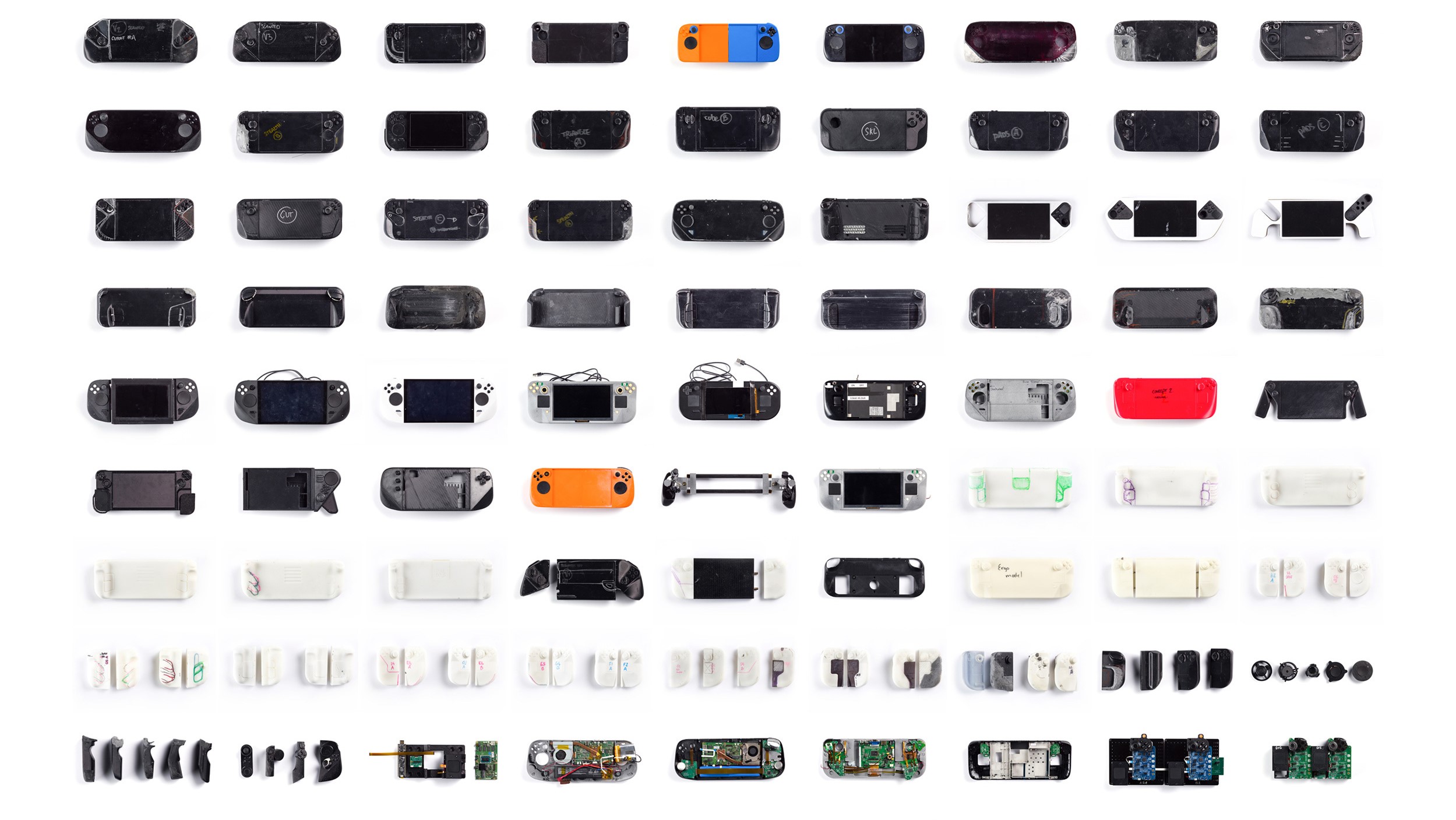[ad_1]

The tech business tends to not showcase its first drafts, not so with Valve’s Steam Deck (opens in new tab). Corporations corresponding to Microsoft would moderately you think about that their glossy, rectangular gaming machines fell from the sky fully-formed than provide you with a glance into the innumerable failures and rejected variations that needed to be made first. Fortunately, Valve has by no means actually shared that philosophy. Within the Steam Deck booklet (opens in new tab), interviews, and even (barely hurtful) nicknames (opens in new tab), the corporate has by no means hid that the method of making the Steam Deck was one in all trial, error, and fixed iteration.
One of the best half is that they (principally) all nonetheless boot, serving as an thrilling reminder of how far issues have come since.This one has a Picasso APU, at about half of the GPU energy of the ultimate Deck. The flatter ergo was an fascinating experiment and taught us a ton about consolation. pic.twitter.com/yLwTtDDYloSeptember 12, 2022
That hasn’t modified with the Steam Deck’s launch in Asia. At press occasions, Valve has laid out tables (opens in new tab) with the Decks that did not make it and, most apparently of all, given us a have a look at how one in all them ran. Pierre-Loup Griffais, one in all Valve’s coders who works on the Steam Deck, has given us a fast glimpse on the boot-up strategy of a Deck that by no means noticed the sunshine of day.
It is noticeably much less glossy than the boot strategy of the ultimate Deck, after all. Most blatant is the truth that earlier than the machine realises it is a Steam Deck and masses up the best UI, it boots into Steam’s default Massive Image mode: a nemesis I nonetheless must take care of each day once I play video games on my TV.
Massive Image mode will, at some point, get replaced by the Deck UI (opens in new tab) throughout all of Steam, but it surely’s fascinating to see that it is nonetheless lurking in there someplace underneath the floor.
We get a quick have a look at the Deck from one other dimension operating Half-Life 2, as nicely. Shock shock, the Deck was capable of play Valve’s traditional with out breaking a sweat, although I admit that some a part of my mind—the half that refuses to just accept 2004 was 18 years in the past—was truly greatly surprised that the weaker Picasso APU within the prototype did not have any hassle with the sport.
That is a slice of AMD silicon with half the uncooked graphical processing energy of the Aerith APU that ended up within the remaining handheld gaming PC we’ve got right now.
It is an fascinating and temporary look right into a world that wasn’t. A world of round observe pads, multicoloured face buttons, and the lingering spectre of Massive Image mode. I type of just like the flatter design on this prototype greater than I do the curves of the present mannequin, if I am trustworthy, though Loup does say that flat design taught Valve “a ton about consolation,” in all probability as a result of it wasn’t all that comfy. Who is aware of, although, perhaps it will make a return on the subsequent Steam Deck (opens in new tab)?
[ad_2]
Source link


